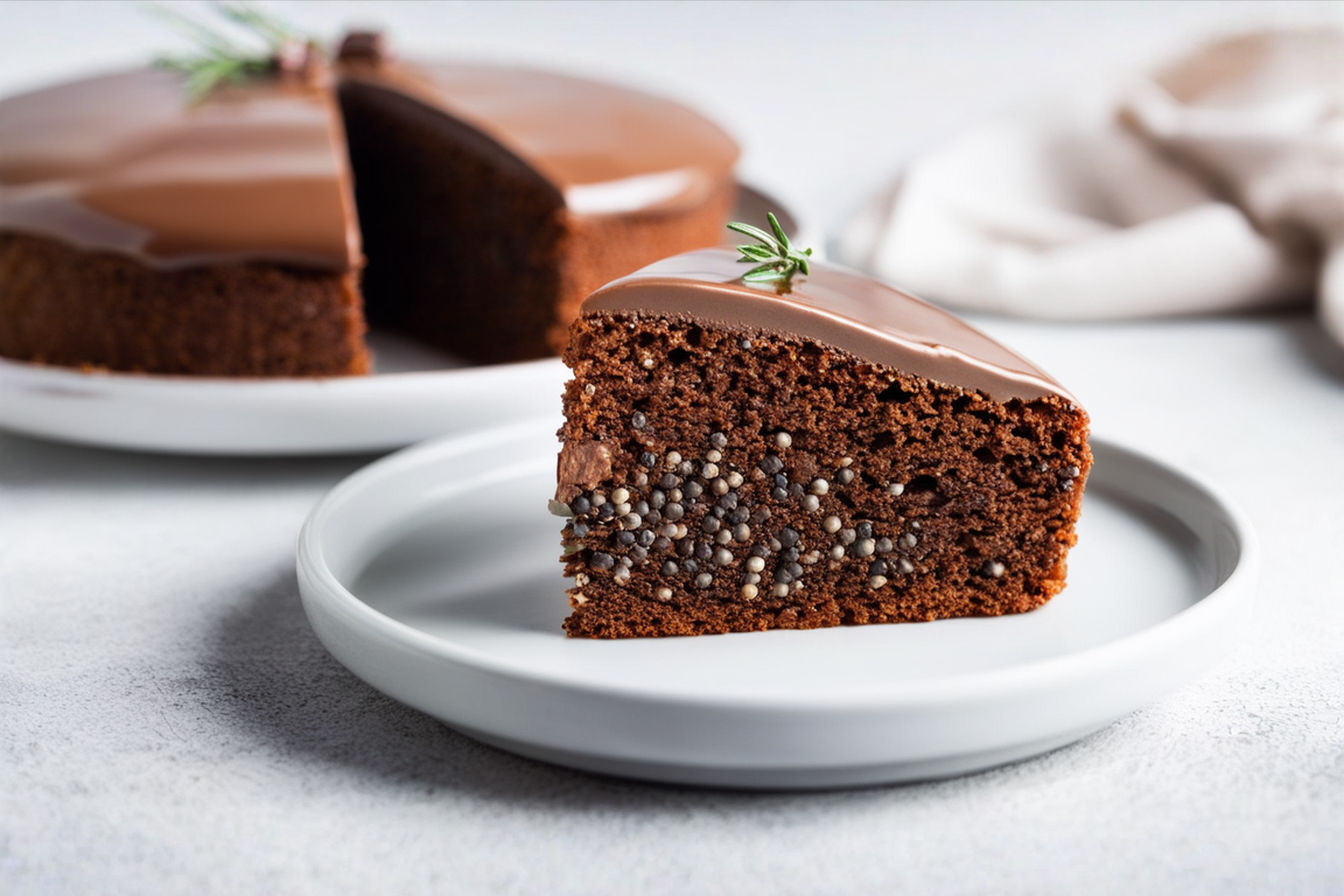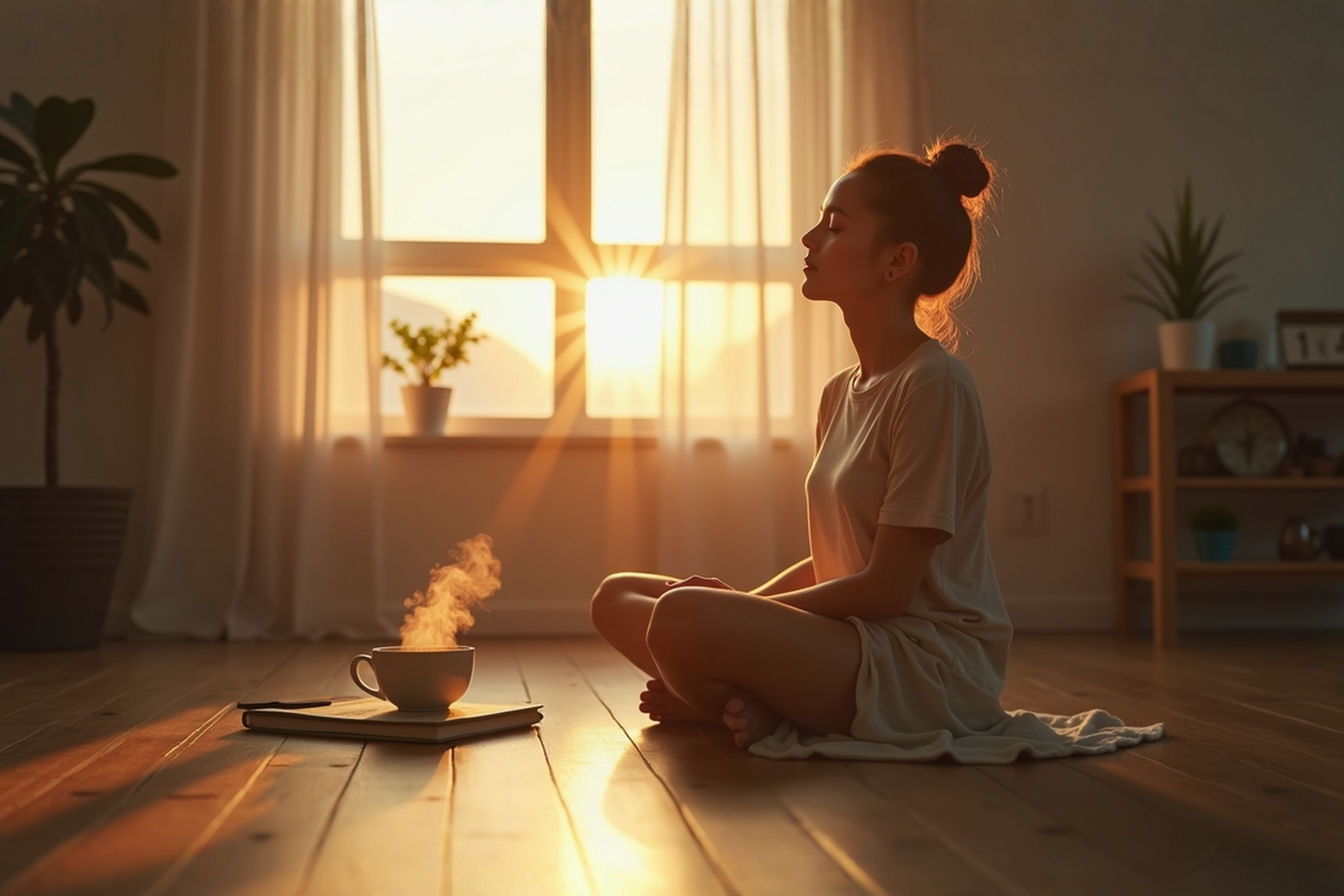This post may contain affiliate links. If you make a purchase through these links, we may earn a commission at no additional cost to you.
Hanging plants upside down transforms ordinary indoor spaces into lush, living showcases that catch the eye and spark conversation. This unique gardening approach saves valuable floor and shelf space while adding a dramatic design element to your home. Whether you live in a small apartment or simply want to try something new, upside-down gardens offer practical advantages beyond their artistic appeal.
The most obvious benefit of hanging gardens is their space-saving nature. When you grow plants upside down, you utilize ceiling and overhead areas that typically remain empty. This vertical gardening technique frees up windowsills, countertops, and floor space for other uses. In small homes or apartments, this advantage becomes even more valuable, allowing you to enjoy gardening without sacrificing limited living space.
Plants grown upside down often develop stronger stems and roots as they work against gravity. This struggle strengthens the plant’s structure and can lead to healthier growth overall. The inverted position also naturally prevents many common pests and soil-borne diseases from attacking your plants. Because the soil sits above the plant, pests that typically crawl up from the ground have a much harder time reaching your precious greenery.
Watering becomes more efficient with upside-down plants. When you water from the top, the moisture travels through the soil and reaches the roots before excess drips away. This natural drainage system reduces the risk of root rot that often occurs when water pools at the bottom of traditional pots. The improved drainage means you’ll deal with fewer fungal problems and spend less time worrying about overwatering.
Accessibility represents another key advantage of hanging gardens. By positioning plants at eye level or just above, you can easily monitor their health, check for pests, and perform routine care without bending or kneeling. This feature makes gardening more comfortable, especially for people with mobility issues or back problems who might struggle with traditional ground-level or floor-based container gardening.
The visual impact of upside-down plants creates stunning focal points in any room. Imagine clusters of trailing pothos cascading from the ceiling, or vibrant cherry tomatoes hanging like living chandeliers in a sunny kitchen corner. This unexpected display of greenery draws the eye upward, adding dimension to your space and creating an immersive, nature-filled environment.
Temperature control improves with elevated plants. Because warm air rises, hanging plants often enjoy slightly warmer conditions than those placed on floors or low shelves. This natural heating can benefit tropical varieties that prefer higher temperatures. Additionally, keeping plants elevated reduces their exposure to cold drafts that often occur at floor level near doors and windows during winter months.
Finally, upside-down gardens protect your plants from curious pets and small children who might otherwise disturb pots on lower surfaces. Cats can’t knock over hanging planters, and dogs won’t accidentally tip them while playing. This positioning creates a safe zone for your plants while maintaining a pet-friendly home environment.
1: Best Plants for Upside-Down Growing
Not all plants thrive when turned upside down, but many trailing varieties actually excel in suspended arrangements. These plants naturally grow downward, making them perfect candidates for hanging gardens. Spider plants, pothos, and philodendrons top the list of easy-to-grow options for beginners. Their cascading growth habit becomes even more pronounced when hung upside down, creating dramatic curtains of foliage that can extend several feet below their containers.
String of pearls and string of hearts deserve special mention for their unique appearance. These succulents produce delicate strands of bead-like leaves that create living necklaces when suspended from the ceiling. They require minimal water and thrive in bright, indirect light, making them perfect for busy plant owners.
Herbs That Defy Gravity
Herbs offer both beauty and function in upside-down gardens. Mint, oregano, and thyme adapt particularly well to inverted growing, with their spreading habits transforming into attractive cascades. These aromatic plants release their scent whenever you brush past them, adding a sensory dimension to your indoor garden experience.
Basil and rosemary can also succeed upside down when given enough light. Position these sun-loving herbs near south-facing windows where they’ll receive at least 6 hours of bright light daily. The convenience of snipping fresh herbs directly from hanging planters while cooking makes this arrangement especially practical for kitchen gardens.
Light Requirements for Hanging Herbs
Flowering Varieties for Colorful Displays
Add vibrant colors to your hanging garden with flowering plants that adapt well to upside-down growth. Trailing begonias produce abundant blooms in shades of pink, red, white, and orange, creating a living chandelier effect. Fuchsias deliver exotic-looking pendant flowers that dangle naturally, enhanced by their inverted position.
For year-round color, consider trailing petunias and calibrachoa (million bells). These prolific bloomers produce hundreds of trumpet-shaped flowers throughout the growing season when given adequate light and regular feeding. Their naturally spreading habit makes them ideal candidates for upside-down cultivation.
Edible Options for Kitchen Gardens
Surprisingly, several vegetables grow successfully when planted upside down indoors. Cherry tomatoes and small pepper varieties adapt well to this growing method, provided they receive enough light. The fruits hang freely below the plant, making harvesting incredibly simple and reducing the risk of rot that can occur when fruits rest on soil.
Strawberries thrive in upside-down planters, with their runners creating a living curtain studded with white flowers followed by bright red berries. The elevated position protects fruits from soil-borne diseases and pests while displaying them at an accessible height for easy picking.
| Plant Type | Top Varieties | Light Needs | Watering |
|---|---|---|---|
| Trailing Foliage | Pothos, Spider Plant, Philodendron | Medium | When top inch is dry |
| Succulents | String of Pearls, String of Hearts | Bright | Sparingly, when dry |
| Herbs | Mint, Thyme, Basil | Medium to Bright | Consistent moisture |
| Flowering | Begonia, Fuchsia, Petunia | Bright | Regular, avoid wetting flowers |
| Edibles | Cherry Tomatoes, Strawberries | Very Bright | Consistent, never dry out |
2: Creating Your Own Hanging Garden
Creating your own upside-down garden starts with selecting the right containers. Repurposed household items often make excellent and budget-friendly hanging planters. Plastic bottles, colanders, fabric pockets, and even hollow coconut shells can transform into beautiful hanging gardens with minimal effort. The key requirement is ensuring your container has adequate drainage and a secure hanging mechanism.
For beginners, modified plastic bottles offer the simplest entry point. Cut the bottom third of a 2-liter bottle, drill small drainage holes in the cap, thread sturdy string or wire through the cap end, and you have a basic upside-down planter. More advanced gardeners might prefer self-watering systems built from nested containers that allow plants to draw moisture as needed.
Step-by-Step Planting Process
The planting process for upside-down containers differs significantly from traditional potting. Start by threading your chosen plant through the bottom opening of your container, carefully guiding the root ball into the soil while allowing the foliage to hang freely below. This critical step requires patience to avoid damaging delicate stems and roots.
Step-by-Step Upside-Down Planting Process
Follow these steps for successful planting:
- Line the opening with a piece of landscape fabric to hold soil in place while allowing roots to grow through.
- Insert your plant’s root ball through the opening, securing it with the fabric.
- Add quality potting mix specifically formulated for container plants, as it provides better drainage than garden soil.
- Consider adding water-retaining crystals or coconut coir to the soil mixture to reduce watering frequency.
- Leave about an inch of space at the top of the container for watering.
Strategic Placement for Optimal Growth
Placement determines whether your upside-down plants will thrive or struggle. Light requirements vary by species, but most hanging plants need at least 4-6 hours of bright, indirect sunlight daily. South and east-facing windows typically provide ideal conditions for most varieties.
Consider the microclimate within your home when positioning hanging gardens. Avoid placing moisture-loving plants near heating vents or air conditioners, which can quickly dry them out. Similarly, keep delicate foliage away from cold drafts near doors and windows during winter months.
Height accessibility matters for maintenance. Position plants where you can easily reach them for watering and care without requiring a ladder for routine tasks. The ideal height allows you to see the undersides of plants for pest monitoring while keeping them high enough to create the desired visual effect.
Watering Systems for Inverted Growth
Watering upside-down plants presents unique challenges. Standard top-watering works but requires careful attention to avoid overflow. Water slowly and in smaller amounts than you would for traditional pots, allowing time for absorption between applications.
Self-watering reservoirs offer a convenient solution for busy plant owners. These systems store water in a separate chamber above the soil, releasing moisture gradually as the plant needs it. Commercial options are readily available, or you can create DIY versions using plastic bottles and wicking materials.
Upside-Down Plant Watering Systems
For larger collections, consider drip irrigation systems designed specifically for hanging plants. These automated setups deliver precise amounts of water directly to each container, minimizing mess and ensuring consistent moisture levels. For humidity-loving tropicals, misting systems supplement regular watering by maintaining higher ambient moisture around the foliage.
3: Care and Maintenance
Watering upside-down plants requires a different approach than traditional potted plants. Moisture management becomes critical since gravity pulls water downward through the soil and potentially away from roots too quickly. The goal is to maintain consistent moisture without creating soggy conditions that lead to root rot.
The finger test remains your best tool for determining when to water. Insert your finger about an inch into the soil at the top of the container. If it feels dry at that depth, it’s time to water. For upside-down arrangements, water less frequently but more thoroughly than you might with conventional pots.
Morning watering provides the best results for hanging gardens. This timing allows excess moisture to evaporate during the day, reducing the risk of fungal issues. If water drips onto furniture or floors below, place saucers or decorative trays beneath hanging plants during watering, then remove them once drainage stops.
Nutrient Delivery Strategies
Fertilizing upside-down plants requires special consideration since nutrients can wash through the soil more quickly. Slow-release granular fertilizers work exceptionally well in these systems, providing steady nutrition over several months rather than all at once. Place these pellets on the soil surface where they gradually dissolve with each watering.
For faster results, use liquid fertilizers at half-strength twice as often as recommended for conventional containers. This approach provides consistent nutrition without the risk of fertilizer burn. Apply directly to the soil rather than spraying foliage to ensure roots receive the nutrients they need.
Fertilizing Schedule for Upside-Down Plants
| Season | Growth Stage | Frequency | Fertilizer Type | Notes |
|---|---|---|---|---|
| Spring | Active Growth | Every 2 weeks | Balanced (10-10-10) | Start when new growth appears |
| Summer | Peak Growth | Weekly | Bloom Booster (7-9-5) | Use half-strength for flowering plants |
| Fall | Slowing Growth | Monthly | Low Nitrogen (5-10-10) | Prepares plants for dormancy period |
| Winter | Dormancy | None or Minimal | None | Resume when new growth starts |
Pruning for Balance and Health
Regular pruning maintains the health and appearance of upside-down plants. Trim away yellowing or damaged leaves promptly, as these can drain energy from the plant and potentially harbor pests or diseases. Make clean cuts with sterilized scissors or pruning shears to minimize stress and prevent infection.
For trailing varieties, strategic pruning encourages fuller growth. Pinch back growing tips to promote branching, creating bushier plants with more abundant foliage. This technique proves especially effective with herbs and flowering plants, resulting in more compact and productive specimens.
Balance becomes particularly important in upside-down arrangements. If plants grow too heavily on one side, they may tilt or strain their hanging mechanisms. Rotate containers quarterly to ensure even growth and maintain symmetrical appearance. This simple practice also prevents plants from permanently bending toward light sources.
Troubleshooting Common Problems
Upside-down plants face unique challenges that require specific solutions:
Drying Out Too Quickly
Symptoms: Crispy leaf edges, wilting despite regular watering Solutions:
- Add water-retaining materials like sphagnum moss or hydrogel crystals to soil
- Create humidity trays beneath plants
- Install self-watering systems
Unstable Growth
Symptoms: Plant leaning heavily to one side, container becoming unstable Solutions:
- Rotate regularly to encourage balanced growth
- Prune heavier sides to maintain equilibrium
- Reinforce hanging mechanisms for added stability
Pest Infestations
While upside-down growing reduces pest issues, certain invaders still find their way to hanging plants. Inspect leaf undersides weekly, as these areas become more visible in inverted arrangements. Common pests include spider mites, which thrive in dry conditions, and aphids, which target new growth.
Troubleshooting Guide for Upside-Down Plants
Organic pest control options work well for hanging plants. Neem oil effectively controls most common pests while remaining safe for indoor use. Apply with a spray bottle, being sure to coat leaf undersides where pests often hide. For severe infestations, insecticidal soap provides quick knockdown without harming plants.
Nutrient Deficiencies
Yellow leaves often indicate nutrient problems in upside-down plants. Lower leaves turning yellow typically signals nitrogen deficiency, while yellowing between veins suggests magnesium shortage. Supplement with specific fertilizers designed to address these issues, following package directions for dilution rates.
Remember that upside-down plants may develop symptoms differently than traditional arrangements due to their inverted growth pattern. Monitor new growth carefully for signs of deficiency, as these young leaves often show problems first. Prompt intervention prevents long-term damage and keeps your hanging garden looking its best.
4: Advanced Techniques and Design Ideas
Once you’ve mastered basic upside-down planting, consider creating multi-level garden displays that maximize vertical space while adding visual interest. These arrangements combine plants at different heights, creating living curtains or green walls that transform ordinary rooms into lush indoor landscapes.
The simplest multi-tiered system uses a single hanging point with containers at different heights. Staggered macramé hangers work perfectly for this approach, suspending several plants from one ceiling hook while maintaining different elevations. This technique creates the illusion of plants floating at various levels without requiring multiple ceiling attachments.
Multi-Tiered Hanging Garden Systems
More advanced gardeners might explore specialized hanging frames designed specifically for vertical gardening. These structures feature multiple attachment points in grid patterns, allowing you to create dense arrangements with dozens of plants in relatively small areas. Many commercial systems include built-in irrigation, eliminating the need for individual watering.
For the most dramatic effect, consider room divider systems that suspend plants from ceiling to floor. These living privacy screens create natural boundaries while improving air quality and acoustics. Position these dividers near windows to maximize light exposure while creating distinct zones within larger rooms.
Strategic Plant Combinations
The most successful hanging gardens combine plants with complementary growth habits and care requirements. Grouping species with similar light, water, and humidity needs ensures that all plants in your arrangement thrive without compromise. This approach simplifies maintenance while creating visually harmonious displays.
Consider these proven combinations:
Strategic Plant Combinations for Hanging Gardens
| Theme | Plants | Care Level | Light Needs | Water Needs | Benefits |
|---|---|---|---|---|---|
| Tropical Cascade | Pothos, Spider Plant, Heart-leaf Philodendron | Easy | Medium to Bright Indirect | Allow top inch to dry between waterings | Air-purifying, fast-growing, visually dramatic |
| Succulent Collection | String of Pearls, Burro’s Tail, String of Hearts | Easy | Bright Indirect | Allow to dry completely between waterings | Drought-tolerant, unique textures, minimal maintenance |
| Culinary Herb Garden | Trailing Rosemary, Creeping Thyme, Trailing Oregano | Moderate | Bright Direct | Keep consistently moist but not soggy | Fragrant, edible, practical for cooking |
| Flowering Display | Trailing Begonia, Lipstick Plant, String of Stars | Moderate | Bright Indirect | Keep consistently moist | Colorful blooms year-round, visual interest |
| Fern Collection | Boston Fern, Maidenhair Fern, Bird’s Nest Fern | Challenging | Medium Indirect | Keep consistently moist, high humidity | Lush foliage, air-purifying, creates microclimate |
Color coordination enhances the visual impact of your hanging garden. Group plants with complementary foliage colors, such as silver pothos with purple wandering jew, or create monochromatic displays using different varieties of the same plant family. These thoughtful combinations create cohesive arrangements that appear professionally designed.
Beyond aesthetics, functional groupings address specific needs or goals. Cluster aromatic herbs near seating areas where their scent can be appreciated. Position air-purifying varieties like spider plants and pothos in bedrooms or offices to improve air quality. Group moisture-loving ferns together to create humidity zones that benefit all plants in the collection.
Seasonal Rotation Strategies
Keep your hanging gardens looking fresh year-round with seasonal rotation plans. This approach acknowledges that even the best indoor plants have natural cycles of growth and dormancy. Rather than forcing plants to perform year-round, work with these natural rhythms by rotating displays seasonally.
For flowering varieties, implement a rest and recovery system where plants move to less prominent positions during dormant periods. Meanwhile, rotate plants at their peak into spotlight locations. This rotation ensures you always have visually appealing specimens on display while allowing others to recuperate.
Light pattern changes throughout the year affect window exposures differently. South-facing windows receive intense direct light in winter but less in summer as the sun’s path changes. East and west windows show less dramatic seasonal variation. Track these patterns and adjust plant positions accordingly to provide optimal growing conditions year-round.
Room-Specific Display Ideas
Different rooms offer unique opportunities for upside-down gardens:
Kitchen Gardens
In kitchens, focus on functional herb arrangements within arm’s reach of food preparation areas. Mint, thyme, oregano, and basil thrive in upside-down planters near windows, providing fresh flavors while saving counter space. For added convenience, label each container clearly so family members can easily identify and harvest herbs without disturbing neighboring plants.
Bathroom Oases
Bathrooms offer ideal conditions for tropical varieties that love high humidity environments. Ferns, orchids, and peace lilies thrive in the naturally steamy atmosphere created by showers and baths. Position these moisture-loving plants away from direct shower spray but close enough to benefit from increased ambient humidity.
Living Room Statements
In main living areas, create conversational focal points with dramatic hanging arrangements positioned over seating areas or in corners. These installations draw the eye upward, making rooms feel larger while adding natural elements to your most-used spaces. Consider uplighting these arrangements for evening drama and extended visual interest after dark.
Conclusion
Upside-down hanging gardens offer a revolutionary approach to indoor gardening that maximizes space while creating stunning visual displays. By inverting traditional planting methods, you gain practical advantages in pest control, watering efficiency, and maintenance accessibility that make gardening easier and more rewarding, especially in limited spaces.
Starting with just one or two hanging plants allows you to experiment with this unique growing technique without overwhelming commitment. As you gain confidence, gradually expand your collection, incorporating different plant varieties and more complex hanging systems to create diverse displays throughout your home.
Remember that successful upside-down gardening depends on matching plants to your specific indoor environment. Consider light availability, humidity levels, and your maintenance schedule when selecting species and planning arrangements. The most thriving indoor gardens result from thoughtful plant selection rather than simply choosing the most visually appealing options.
The versatility of hanging gardens makes them suitable for nearly any indoor space. From kitchen herb collections that enhance your cooking to dramatic trailing displays in living areas, upside-down plants adapt to your specific needs and design preferences. This flexibility explains why suspended gardens continue gaining popularity among urban dwellers, apartment residents, and homeowners alike.
As indoor gardening trends evolve, upside-down planting stands out for its perfect blend of form and function. By embracing this innovative approach, you’ll create beautiful living spaces and discover a rewarding hobby that connects you with nature regardless of your living situation or gardening experience.
Why not start your upside-down gardening journey today? With the knowledge from this guide, some basic supplies, and a few well-chosen plants, you’re fully equipped to create your own gravity-defying indoor oasis.






